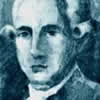
INEbase / Demography and Population / Population Figures and Demographic Censuses / Population and Housing Census 2001
|
Population and Housing Census 2001 Some history Historical series 1900-2001: Population by sex and age - Census figures Spanish Censuses in the 20th Century In 1991 the registered Spanish population amounted to 38,872,268 inhabitants, which is more than double the Census figure recorded for 1900 (18,830,649 inhabitants). However, the interannual growth has not been uniform, given that although sometimes the annual rate exceeded 10 per mille (1960-1981), at others it hardly exceeded 3 per mille (1981-1991). During the whole of the century, the percentage of males remained at around 48.5 per cent, and only dropped under 48 per cent in the 1940 Census, due to the consequences of the Spanish Civil War (1936-1939). The evolution of the Spanish population included in the census reflects the historical events that have affected the country and altered the natural development of demographic phenomena. A detailed analysis of the generations reveals the traces of the 1918 flu epidemic, the African war (1921-1927) and the Spanish Civil War which, apart from the excess mortality and reduction of births typical of all military confrontations, supposed the exodus of 300,000 persons, and also the last mass emigration of Spaniards (1959-1975) which affected over one million persons. The structure by age and sex that appears in the successive age pyramids also presents the evolution of the behaviour of the demographic component of the Spanish population. Indeed, the age pyramids for the beginning of the century show a traditional demographic model, characterised by high birth rates (although already presenting a limitation of fertility) and mortality rates. Conversely, the last censuses reveal a radically different model, with low birth and mortality rates. It is important to note the speed at which the birth rate has decreased since 1975, to the point of having transformed the pyramid that traditionally represented the population, which is pear-shaped at present. The immediate consequence of this change of the behaviour is the aging of the contemporary population, which will probably and unavoidably be accentuated in the near future. An aspect to bear in mind when studying population pyramids is the reiterative effect of the phenomena that affect them. Consequently, generations that are reduced for any given reason (for example, the lower birth rate usually caused by war) will produce smaller generations when reaching the reproductive age. Apart from their interest when analysing issues related to the population and its evolution, census figures are also relevant as the reference framework used to assess the rest of the magnitudes, as they are employed to calculate rates, coefficients and indicators. In any case, the information provided by the censuses goes beyond the mere quantitative aspect of the global volume of population. Its greater possibilities are derived from the different variables they collect, providing information and facilitating the creation of demographic, economic and social policies, as well as controlling their execution. Historical Censuses The history of Spanish population censuses necessarily begins with a reference to the "Neighbourhoods" carried out by the Spanish monarchy during the 16th and 17th centuries. These operations, which mainly aimed to identify the number of neighbours living in the different locations of the kingdom of Castilla, had purely fiscal purposes. It is difficult to define the unit investigated, ?the neighbour?, precisely and, consequently, the conversion of the variable into "number of inhabitants" has still not been carried out satisfactorily. Therefore, the genuine history of the Spanish population censuses begins in 1768, when the Count of Aranda gave specific orders to commence tasks aimed at establishing the "genuine population of this Monarchy" so as to "promote useful ideas to the State, in terms of the sex and age of the population."
Said form had to summarise the population in said locations using a two-way layout in accordance with six age groups, sex and marital status. Since the results obtained from these tasks were not as satisfactory as expected, the Count of Floridablanca undertook the execution of a new Population Census. The first step for the execution of this Census was taken when, as established by a Royal Order from 1785, the intendants of the different provinces were requested to send a list of all the towns in the area so as to create a Nomenclator that would be used to limit the field of action.
In this case, the Census was commissioned to the intendants of each province, who were to send the civil authorities of each place (mayors, aldermen?) a single questionnaire in which they were to enter all the information requested. The questionnaire had to summarise the population in a two-way layout, similar to the one used in 1768. Furthermore, the population had to be classified according to a table of occupations including 23 classes.
The Napoleonic wars and the political instability of the subsequent periods prevented the execution of new censuses until 1857, when the next Population Census was performed; it was published in 1858. This new Census was the first to use the provincial division endorsed in 1833, which is still valid today. It was also the first to include the classification of the population as "established" or "non-resident." It is important to note that, on its publication, the persons in charge of this Census warned of the scarce reliability of the figures obtained, and recommended a new Census should be carried out as quickly as possible in order to take advantage of the experience gained from the previous one. Following these recommendations, another more meticulous Census was performed in 1860. The main innovations were, as well as the reliability of the information, population tables classified by elementary education, classification of the population by comprehensive age intervals and, mainly, the calculation of the "de jure population."
|





